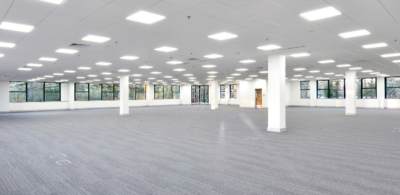The world of work is changing at an accelerated pace. These days, disruption and uncertainty is the only certainty in the working world. With a highly dynamic business landscape, dominated by ever-changing client demands and digital transformation, how are organizations responding? In my experience, the most successful organizations are changing as the business landscape is changing, they are adapting their service offering to client needs and industry deviations and they are introducing agility into their business structures and work environments.
The organizations who change as the business landscape changes are turning disruption and uncertainty into opportunity; they are largely doing this by adopting agile work practices, where relevant. So, let’s talk agility and why it may be relevant for your organization.
Where does agile working come from and how does it work?
The roots of agile work practices lie in technology companies. Many of these companies employ an incremental and iterative methodology to product delivery, rather than trying to deliver single products all at once. This approach embraces continual change and evolution.
No longer just a methodology for technology companies, having agile work practices is synonymous with flexibility and the adaptability to quickly shift, without the red tape, in different business directions as required or desired.
So how does agile work practices affect the way an organization operates?
There is no “one size fits all” approach to agile working, but it usually involves the creation of multi-disciplinary teams (ideally 6 to10 people per team) as part of a broader business ecosystem. People with diverse backgrounds, roles and experiences, and importantly from different departments, are put together as a team to develop and continuously improve products and projects.
This is different to how we have traditionally worked; within a department. And by department, I’m referring to long-term hierarchical teams with fixed compositions. Departments typically work on specific products or services for their organization and clients, and often notably with limited collaboration, and a lack of seamless connection, with other departments. And, often the work environment reflects this.
So, does this spell the death of the department? No, not all organizations will go to the extent of substantially restructuring their operations into agile work practices, like we’ve seen with big banks or large technology companies. However, I expect agile work practices to become increasingly adopted in parts of organization’s that have technology, digital and product components. This means taking talent from departments, such as marketing, product development and management and IT, and putting them into a multidisciplinary team set around a goal or outcome. Likewise, the work environment does not necessarily need to completely change, the addition of spaces to accommodate these dynamic teams can suffice. A hybrid solution, if you will.
Is activity-based working and agile working the same thing?
I’m commonly asked if activity-based working is the same thing as agile working, and it’s a good question. The short answer is no.
Traditional workplace environments are fixed and have assigned spaces for specific people. This typically means less variety and opportunities for incidental interaction and collaboration. Activity-based environments usually have unassigned spaces allowing employees to have more choice on how and where they want to work within the workplace. This typically means more variety and opportunities for incidental interaction and collaboration with other employees but focuses heavily on how an individual uses space.
Agile working, on the other hand, focuses not on the individual, but how the team uses space. Think of agile working as a project or team-based environment; it’s not a traditional, nor a totally activity-based environment — it sits somewhere in between. In agile working environments, spaces are assigned to specific projects; projects with individuals from different departments collaborating to reach a desired outcome.
What are the impacts of adopting agile working?
In traditional workplaces and even activity-based environments, the need for project style spaces often means taking over existing meeting rooms. This results in demand and supply pressure on employees, as key spaces become unavailable for long periods of time. In addition, a typical meeting room does not properly support agile work practices. So, if not a meeting room, what then? I suggest a collaborative team studio with team tables, flexible furniture and configurations, walls for visual management and stand up areas designed for spontaneous interaction.
When it comes to agile working, there can be less workplace variety, as the focus is not on supporting individual workstyles and activities, but that of the team. As team members need to be co-located and working together, the propensity to move around different spaces is decreased. As there is continual informal collaboration between teams, and shorter, ad hoc or planned stand-up meetings, there is less need for formal, reserved meeting spaces. Given the increase of this ‘in space’ collaboration, there is typically a greater need for breakout spaces for concentrated work. To avoid room-claiming behavior we recommend more open or semi-enclosed focus spaces, such as quiet areas or library type spaces, rather than actual enclosed rooms.
Flexibility and multi-functionality is key for agile work environments. Programming the space for different activities and team composition changes will help future proof the workplace and reduce significant refurbishment costs. This can be done through dynamic lighting, digital signage and flexible and reconfigurable furniture. Predictive technologies will also play a critical role in anticipating employee needs and customizing these spaces to suit. This ‘virtual concierge’ will reduce employee friction and provide a meaningful feedback loop for proactive facilities management and the curation of employee experience.
It’s important to note that agile working can limit the ability to work away from the workplace, because typically in order to collaborate you need to co-locate with your colleagues. Ironically, this can lead to lower space efficiency as unoccupied workstations in team areas are not used by other teams. However, agile working can also increase workplace occupancy rates as people are physically working more from the workplace.
Why implement agile working?
Agile work practices can help manage changing business priorities and demands, break down departmental silos and improve product and work visibility. Agile work practices can enhance productivity and speed to market, foster the ability to co-create with clients and help develop a culture of flexibility, innovation, talent attraction and retention. Creating workplaces and portfolios with flexible footprints that scale to meet the changing demands of an organization is an invaluable benefit of agile work practices.
Are agile work practices right for my business?
There is no one size fits all approach to agile working and it largely depends on the nature of your business and the day to day tasks of the workforce.
For the right organizations, there’s no doubt agile work practices can help shape organizational culture, brand perception and boost engagement as well as talent attraction and retention, through a stronger, more visible innovation agenda. It is important to note that processes and policies around people and culture, not just space, are necessary for effective implementation.
Using a workplace professional to implement new strategies for your workplace, like agile working, is fundamental to the success of your organization. If you are interested in discussing agile work environments and practices in more detail, and how it could benefit your organization feel free to get in touch.

 Sven Moller
Sven Moller
 Martin Woodrow
Martin Woodrow Chris Zlocki
Chris Zlocki
 Aaron Jodka
Aaron Jodka
 Andrew Steele
Andrew Steele